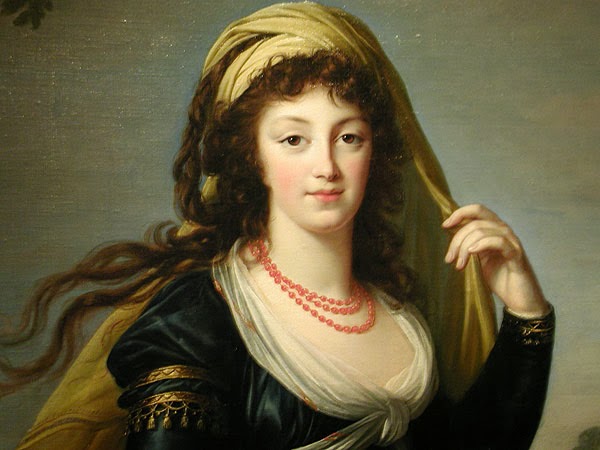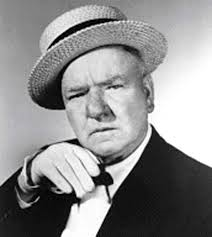Announcements
ATTENTION: Adobe Digital Editions has come
out with version 3. However, it will NOT allow you to read books from older
versions on your e-reader. If you have
an e-reader, do NOT upgrade to this newer version. If you do, there is no fix
to enable you to read the older books.
STAR TREK MARATHON STARTING TOMORROW! First week of February 1-7, showing movies and episodes
- leading up to…
Geek Day 2.8 on Saturday, February 8th.
Mark your calendar!!
Do you have a young reader in your
house, or a pre-reader? Check out our Tumble Books in our e-resources.
They are animated talking picture books for your young'uns, which will teach
them to love reading.
Computer Classes every Sat.
mornings 10-12. "Open House" Whatever you need. Drop in anytime
during those two hours.
Captain Kirk
Background Samples
Genealogy
tip for the day: Picture backgrounds and settings
If the picture you have was taken in a studio it is
apt to have a drop sheet with a painted scene in it. Otherwise, photos taken by
friends or family may have clues in it by what else is in the photograph, a
car, a house, maybe even a street sign. Be observant of what you see.
When personal items are found in your pictures,
compare them with other photos you have and see if you can identify ‘this
picture by that picture’… so to speak. In fact, comparing pictures will help
you to identify even more of them. Once you have identified one, or have one
that is identified. Often comparing them will help you decide who are in other
pictures.
So far we can determine or identify people by:
-Determining the type of photo
and therefore the time period.
-Find out who the
photographer was and the time they were in business and where.
-Look for clues in the
setting or background of the picture.
Next time we will talk about fashions and hairdos.
Websites with more information:
And there are a lot more…
“History is who we
are; Genealogy is who I am” sg
If any of these posts are helpful drop us a line in
the comments section below. We just want to know if the information we provide
to you is beneficial in anyway.
Guy Fawkes
1606
|
Guy Fawkes is hanged, drawn and quartered for his part in
the Gunpowder Plot, an attempt to blow up Parliament.
|
|
1620
|
Virginia colony leaders write to the Virginia Company in
England, asking for more orphaned apprentices for employment.
|
|
1788
|
The Young Pretender, Charles Edward Stuart dies.
|
|
1835
|
A man with two pistols misfires at President Andrew
Jackson at the White House.
|
|
1865
|
House of Representatives approves a constitutional
amendment abolishing slavery.
|
|
1911
|
The German Reichstag exempts royal families from tax obligations.
|
|
1915
|
Germans use poison gas on the Russians at Bolimov.
|
|
1915
|
German U-boats sink two British steamers in the English
Channel.
|
|
1916
|
President Woodrow Wilson refuses the compromise on Lusitania
reparations.
|
|
1917
|
Germany resumes unlimited sub warfare, warning that all
neutral ships that are in the war zone will be attacked.
|
|
1935
|
The Soviet premier tells Japan to get out of Manchuria.
|
|
1943
|
The Battle
of Stalingrad ends as small groups of German soldiers of the Sixth Army surrender
to the victorious Red Army forces.
|
|
1944
|
U.S. troops under Vice Adm. Spruance land on Kwajalien
atoll in the Marshall Islands.
|
|
1950
|
Paris protests the Soviet recognition of Ho Chi Minh's
Democratic Republic of Vietnam.
|
|
1966
|
U.S. planes resume bombing of North Vietnam after a 37-day
pause.
|
|
1968
|
In Vietnam, the Tet
Offensive begins as Viet Cong and North Vietnamese soldiers attack
strategic and civilian locations throughout South Vietnam.
|
|
1976
|
Ernesto Miranda, famous from the Supreme Court ruling on Miranda
vs. Arizona is stabbed to death.
|
|
1981
|
Lech Walesa announces an accord in Poland, giving
Saturdays off to laborers.
|
|
| Born on January 31 |
||
1734
|
Robert Morris, signatory of the Declaration of
Independence.
|
|
1797
|
Franz Schubert, Austrian composer (C Major Symphony,
The Unfinished Symphony).
|
|
1919
|
Jackie Robinson, first African-American baseball player in
the modern major leagues.
|
|
1925
|
Benjamin Hooks, civil rights leader.
|
|
Benjamin Hooks
bumfuzzle
PRONUNCIATION:
(bum-FUZ-uhl)
MEANING:
verb
tr.:
To confuse.
ETYMOLOGY:
From
bum-, probably from bamboozle (to deceive) + fuzzle (to confuse). Earliest
documented use: 1900.
USAGE:
"Latt
insists the company is not trying to bumfuzzle anybody into believing Asylum's
releases are big-studio product."
James Hebert; Knockoff Movies Touted as 'Tie-ins'; Union-Tribune (San Diego, California); August 17, 2007.
James Hebert; Knockoff Movies Touted as 'Tie-ins'; Union-Tribune (San Diego, California); August 17, 2007.
A THOUGHT FOR TODAY:
I don't trust a man who uses the word evil
eighteen times in ten minutes. If you're half evil, nothing soothes you more
than to think the person you are opposed to is totally evil. -Norman Mailer,
author (1923-2007)
Today’s
Recipe
Soups
for Cold Winter Days
I thought for today I would list what recipes I have posted for
the month. If I can remember (!), I will do this at the end of every month. They aren't hyper linked but here is a list in date order...
January Winter Soups
|
|
2-Jan
|
Chicken Noodle Soup
|
3-Jan
|
Butternut Squash and Carrot soup
|
6-Jan
|
Ham and Yam soup
|
7-Jan
|
Barley Beef Soup
|
9-Jan
|
Kitchen Sink soup
|
11-Jan
|
Classic tomato soup
|
13-Jan
|
Tortellini Florentine soup
|
14-Jan
|
Healthy Cabbage Soup
|
16-Jan
|
Cabbage Jambalaya
|
17-Jan
|
Game Day Pork and Black Bean Chili
|
20-Jan
|
Winter Vegetable Soup
|
21-Jan
|
Nate's Minestrone
|
22-Jan
|
Soup Stock
|
23-Jan
|
Bread Bowls
|
25-Jan
|
Midwinter Vegetable Soup
|
27-Jan
|
Chicken-Andouille Gumbo
|
28-Jan
|
Mushroom Bisque with Hat
|
29-Jan
|
Butternut Squash Bisque
|
30-Jan
|
New England Clam Chowder
|
31-Jan
|
Index
|
AND --- here is an alphabetical
list for you: (Maybe this will be easier.)
Barley Beef Soup
|
7-Jan
|
Bread Bowls
|
23-Jan
|
Butternut Squash and Carrot soup
|
3-Jan
|
Butternut Squash Bisque
|
29-Jan
|
Cabbage Jambalaya
|
16-Jan
|
Chicken Noodle Soup
|
2-Jan
|
Chicken-Andouille Gumbo
|
27-Jan
|
Classic tomato soup
|
11-Jan
|
Game Day Pork and Black Bean Chili
|
17-Jan
|
Ham and Yam soup
|
6-Jan
|
Healthy Cabbage Soup
|
14-Jan
|
Kitchen Sink soup
|
9-Jan
|
Midwinter Vegetable Soup
|
25-Jan
|
Mushroom Bisque with Hat
|
28-Jan
|
Nate's Minestrone
|
21-Jan
|
New England Clam Chowder
|
30-Jan
|
Soup Stock
|
22-Jan
|
Tortellini Florentine soup
|
13-Jan
|
Winter Vegetable Soup
|
20-Jan
|
ENJOY!
Now You Know!
















